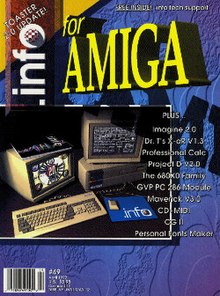
Commodore International was an American home computer and electronics manufacturer founded by Jack Tramiel. Commodore International (CI), along with its subsidiary Commodore Business Machines (CBM), was a significant participant in the development of the home-computer industry in the 1970s, 1980s and early 1990s. The company developed and marketed the world's best-selling computer, the Commodore 64 (1982), and released its Amiga computer line in July 1985. With quarterly sales ending 1983 of $49 million, Commodore was one of the world's largest personal computer manufacturers.

Compute!, often stylized as COMPUTE!, was an American home computer magazine that was published from 1979 to 1994. Its origins can be traced to 1978 in Len Lindsay's PET Gazette, one of the first magazines for the Commodore PET computer. In its 1980s heyday, Compute! Covered all major platforms, and several single-platform spinoffs of the magazine were launched. The most successful of these was Compute!'s Gazette, which catered to VIC-20 and Commodore 64 computer users.

Zzap!64 was a computer games magazine covering games on the Commodore International series of computers, especially the Commodore 64 (C64). It was published in the UK by Newsfield Publications Ltd and later by Europress Impact.

The Pawn is an interactive fiction game for the Sinclair QL written by Rob Steggles of Magnetic Scrolls and published by Sinclair Research in 1985. In 1986, graphics were added and the game was released for additional home computers by Rainbird.
The Toronto PET Users Group is one of the world's oldest extant computer user groups, and was among the very largest. The non-profit group is based in Toronto but has an international membership. It supports nearly all Commodore computers, including the PET, VIC-20, C64, C128, Plus/4, C16, C65, and Amiga, including the COMAL, CP/M and GEOS environments. TPUG is noted for its ties with Commodore Canada, its extensive and widely distributed software library, and its association with prominent computing pioneers such as Jim Butterfield, Brad Templeton, Karl Hildon, and Steve Punter.
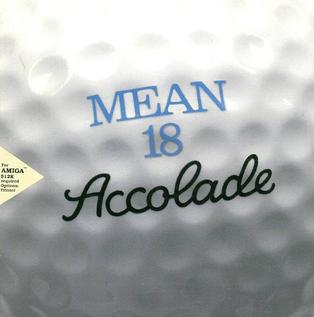
Mean 18 is a golf video game designed by Rex Bradford with graphics by George Karalias, both of Microsmiths, and released by Accolade for MS-DOS compatible operating systems in 1986. It was ported to the Commodore 64, Amiga, Apple IIGS, Atari ST, and Macintosh. It includes an editor allowing players to create their own courses. In 1989, Atari Corporation published a port for the Atari 7800 console. An Atari 8-bit family version was in development in 1989 but was ultimately cancelled.

Arcticfox is a science fiction tank simulation video game developed by Dynamix and published by Electronic Arts in 1986. It was published in Europe by Ariolasoft. A sequel to Dynamix's Stellar 7, Arcticfox was developed for the Amiga as one of the platform's first titles but was quickly ported to other platforms including the Atari ST, Commodore 64, ZX Spectrum, MS-DOS and Apple II. A third game was released in the series in 1991 titled Nova 9: The Return of Gir Draxon.

World Games is a sports video game developed by Epyx for the Commodore 64 in 1986. Versions for the Apple IIGS, Amstrad CPC, ZX Spectrum, Master System and other contemporary systems were also released. The NES version was released by Milton Bradley, and ported by Software Creations on behalf of producer Rare.
Jim Oldfield is an author, editor, and reviewer famous for his work with Commodore computers. He is married to Deb Oldfield and is the father of James, Jon, and Jason Oldfield.
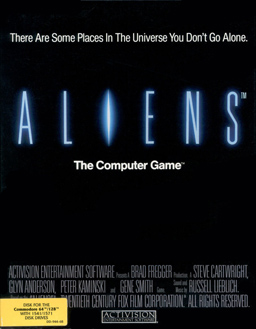
Aliens: The Computer Game is a 1986 video game developed and published by Activision for the Commodore 64, Apple II based on the film of the same title. As Activision's UK subsidiary Electric Dreams Software had independently released their own version of the game with the same title, the game was renamed for European release. Initially planned to be released as Aliens: The Second Part., it was finally published under the title Aliens: US Version with ports for the Amstrad CPC and ZX Spectrum produced by Mr Micro.

Shanghai is a computerized version of mahjong solitaire published by Activision in 1986 for the Amiga, Atari ST, Atari 8-bit family, Commodore 64, DOS, Macintosh, Apple IIGS and Master System. Shanghai was originally programmed by Brodie Lockard. It was released as an arcade game by Sunsoft in 1988.

The Chessmaster 2000 is a computer chess game by The Software Toolworks. It was the first in the Chessmaster series and published in 1986. It was released for Amiga, Apple II, Atari 8-bit family, Atari ST, ZX Spectrum, Commodore 64, Amstrad CPC, MSX, Macintosh, and IBM PC compatibles.

Temple of Apshai Trilogy is a remake of three games from the Dunjonquest series, Temple of Apshai, Upper Reaches of Apshai, and Curse of Ra.

Leader Board is a series of golf simulation video games that was developed by Bruce Carver and Roger Carver, and published by Access Software.

Indoor Sports is a video game developed by DesignStar's SportTime and first published in the U.S. by Mindscape in 1987 for the Commodore 64. It was converted to many other platforms, particularly in Europe where it was published by Databyte, Advance Software and Tynesoft.
The Commodore 1351 is a computer mouse made by Commodore in 1986, which can be directly plugged into the 9-pin control port of a Commodore 64 or 128.
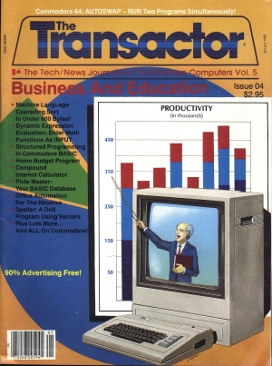
The Transactor was a computer magazine directed at users of Commodore home computers.

World of Commodore is an annual computer expo dedicated to Commodore computers.
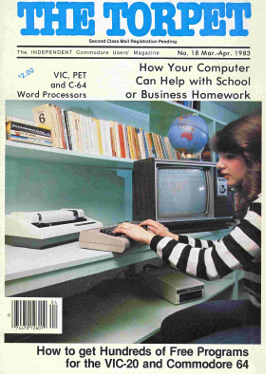
The TORPET was a Toronto-based computer magazine directed at users of Commodore's 8-bit home computers.
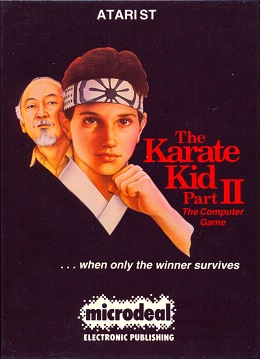
The Karate Kid Part II: The Computer Game is a fighting game based on the 1986 film The Karate Kid Part II. It was initially released for the Atari ST in 1986, and an Amiga port was published in 1987. It was published by Microdeal in Europe and the United States, and by Ozisoft in Australia.
